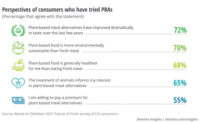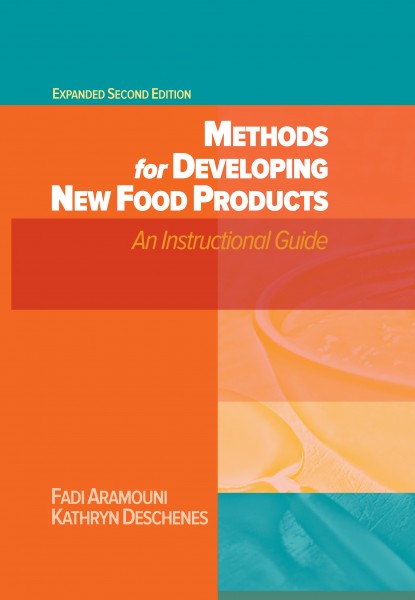
Ingredients undergo high pressure processing prior to packaging by Stella & Chewy’s, a manufacturer catering to the fast-growing raw pet food category. The company is switching to preprinted, linear low-density polyethylene packaging. Source: Stella & Chewy’s Pet Food Co.

Refrigerators are being deployed in supermarkets’ pet food aisles to accommodate Freshpet Select, a minimally processed pet food brand that is redefining the premium category Source: Tyson Foods.
Fresh dog food has been a niche product for 60 years, but momentum has built in recent years with new products from companies backed by deep-pocketed investors. Sales of frozen and refrigerated products were estimated at $165 million in 2008, when supermarket sales grew 19.7%, according to Information Resources Inc. Growth slowed to 12% last year, and although it remains a small part of the estimated $10 billion spent annually on dog food, some manufacturers believe it will follow the path of Australia, where fresh pet food now accounts for 20 percent of the market.
“It’s definitely headed in that direction,” acknowledges Marie Moody, founder of Stella & Chewy’s, which has produced frozen and freeze-dried dog food at its Milwaukee area facility since 2007. Like most fresh suppliers, Stella & Chewy relies on specialty stores to distribute to a customer base that skews female and childless.
“Maybe it’s the caretaker relationship, but with baby food and pet food, people have higher expectations,” says Moody, an observation seconded by Freshpet Inc.’s Marketing Director Kathryn Winstanley.
“There are tons of social trends to support continued growth,” says Winstanley. “Pets are part of the family, and people are spending more on them.”
Secaucus, NJ-based Freshpet set itself apart four years ago by focusing on mainline grocery stores. A 3,000-store network had been built by early 2009 when a minority stake in the company was sold to Tyson Foods Inc. The key to the relationship is Tyson’s status as the largest refrigerated logistics firm in the country, according to Winstanley. By year’s end, as many as 6,000 supermarkets will have Freshpet’s refrigerators next to canned dog food in their pet food aisles.
The flagship product is Freshpet Select, which is packaged in a lidded PET tray, gas flushed and vacuum-sealed under film, Winstanley says. A 10.25 oz. tub-almost entirely meat, poultry and egg protein-remains stable up to two months before opening and retails for about $2.
The largest competitor in the raw-and-frozen segment is Nature’s Variety, which was acquired a few years ago by Catterton Partners, a private equity firm. The Lincoln, NE-based firm suffered a setback in February when it recalled a number of products because of Salmonella contamination. A company spokesman insists Salmonella is not an issue for canines, but “FDA has zero tolerance for any food pathogens in pet food.” FDA and, in some cases, USDA, has jurisdiction over pet food production, in part because of an assumption that a portion of the products are consumed by humans.
As a result of the recall, the company announced it would institute a test-and-hold protocol for finished goods and send all materials to Milwaukee for high pressure processing at American Pasteurization Co. (APC), following the lead of Stella & Chewy’s. HPP destroys bacteria and viruses, and Nature’s Valley has established a maximum process temperature of 90° F to prevent destruction of amino acids and other nutrients.
After consulting with food scientists at the University of Wisconsin-Madison and Justin Segel, APC’s co-owner, Moody moved to HPP treatment of raw materials in 2007.
“It always seemed like good insurance against a recall,” she explains. HPP typically is applied post packaging, but Stella & Chewy’s formed patties exploded under pressure. Subsequently, the company is upgrading its packaging to preformed bags with a linear low-density polyethylene lining under nylon and white polyethylene from Trademark Packaging, Vancouver, BC. The bags are rotogravure printed on a matte finish, according to Steve Harvey, Trademark’s president. The packaging upgrade should boost Stella & Chewy’s shelf appeal.
“We doubled again last year,” says Moody, and some of her frozen and refrigerated competitors make similar claims. Improved packaging will help sustain growth, but greater attention to food safety is critical to the category.
For more information:
Justin Segel, American Pasteurization Co., 414-332-4400, justin.segel@pressurefresh.com
Steve Harvey, Trademark Packaging, 250-545-3098, steve@trademarkpackaging.com


